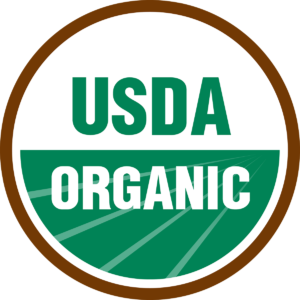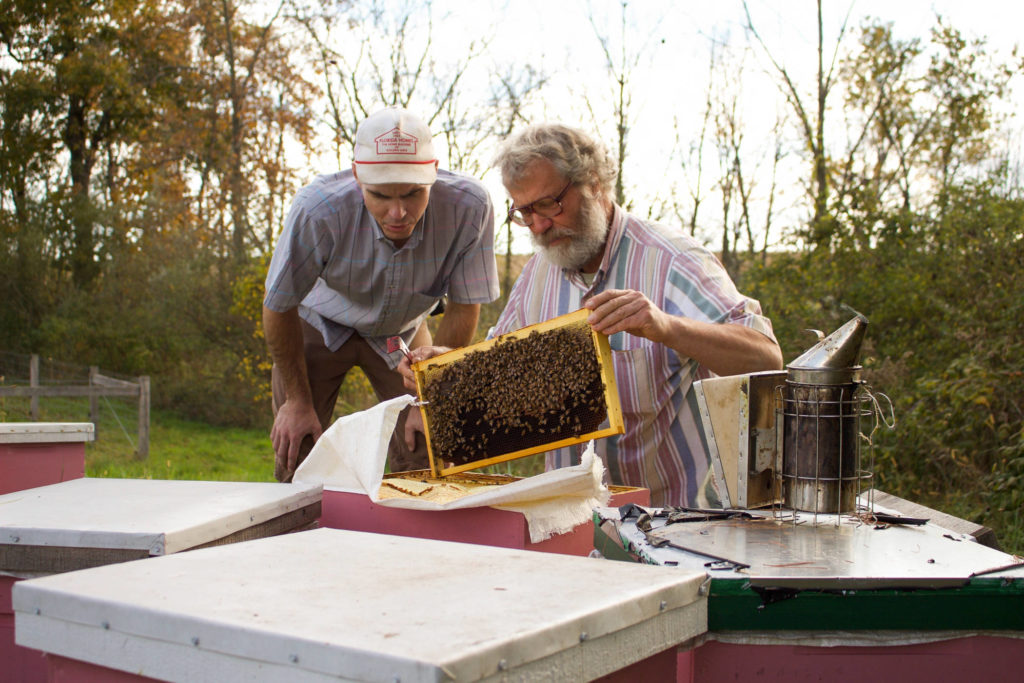This blog post is part of a special series called “The Truth About Organic.” Want more? Download the full “The Truth About Organic” guide here.
What’s the Truth About Organic?
Organic farming isn’t new. For as long as people have been growing food, natural and organic methods were the norm.
What’s new is organic’s substantial value in the modern marketplace. And that radical change has occurred in just the last 30 years.
In 1990, Congress passed the Organic Foods Production Act, a novel piece of legislation authorizing the creation of federal standards for organic production. For the first time, organic arrived on the national stage.
Since then, the market for organic food and products has exceeded all expectations.

Despite skepticism and pushback from conventional industries, today more than 82% of American households purchase organic products. As of 2018, the organic market is worth more than $50 billion in the U.S. alone, and it continues to grow at a rate that far exceeds other categories.1
In 1954, J.I. Rodale said, “Organics is not a fad.” 65 years later, he’s proven right.
But with explosive growth has come confusion over what exactly “organic” means, and whether organic is truly worth the price premium.
Our answer? Absolutely.
For more than 70 years, we’ve been researching best practices in regenerative organic agriculture. Our decades-long Farming Systems Trial has borne out the evidence that organic systems are more resilient, sequester more carbon, yield fewer emissions, require less energy, and can produce yields equal to conventional—if not higher.2
Now, we’re expanding our research to encompass links between soil health and human health, an area woefully unexplored through long-term trials. We remain objective in our research, but we believe in the power of organic, and we always have.
But we’re not here to tell you what to think. We believe in empowering you to make the choice for yourself.
Maybe you’ve heard that the organic label is just a marketing ploy, but that’s far from the truth.
Let’s dig in, shall we?
Part 1: What the heck is organic anyway?
 Organic agriculture is a production system that regenerates the health of soils, ecosystems, and people.
Organic agriculture is a production system that regenerates the health of soils, ecosystems, and people.
Organic farmers rely on natural processes, biodiversity, and cycles adapted to local conditions.
According to the USDA:
“Organic production is not simply the avoidance of conventional chemical inputs, nor is it the substitution of natural inputs for synthetic ones. Organic farmers apply techniques first used thousands of years ago, such as crop rotations and the use of composted animal manures and green manure crops, in ways that are economically sustainable in today’s world. In organic production, overall system health is emphasized, and the interaction of management practices is the primary concern. Organic producers implement a wide range of strategies to develop and maintain biological diversity and replenish soil fertility.”
 If you purchase a product with the USDA Organic seal, you can be assured that item was produced without synthetic pesticides, herbicides, or fertilizers, and that it is GMO-free. Organic also prohibits dozens of other chemical additives and preservatives, but we’ll take a closer look at those facts next week.3
If you purchase a product with the USDA Organic seal, you can be assured that item was produced without synthetic pesticides, herbicides, or fertilizers, and that it is GMO-free. Organic also prohibits dozens of other chemical additives and preservatives, but we’ll take a closer look at those facts next week.3
Part 2: The certification process
Here are some important things to know about certification:
-
- The rules for what materials and practices are allowed in organic production are determined by the National Organic Standards Board and the National Organic Program, which were established in the early 2000s (see part 3 below). The NOSB and NOP decide on these rules and review them biannually with input from organic farmers, producers, organic business owners, and others—including consumers like you.
- The public is invited and encouraged to submit their comments and opinions on what should be permissible in organic. That means you get a say. Submit your thoughts to the NOSB here; stay informed on policy process by subscribing to their email list; or join the Organic Farmers Association, a group that collates the opinions of organic farmers and advocates for policy improvements so you don’t have to.
- Every organic farmer and producer that wants the USDA Certified Organic label on their product must undergo a yearly review and audit by a third-party certifier. Every facet of the farm or business and every material used is examined to make sure it’s in compliance with the rules set by the NOSB and NOP. This means extra paperwork and time for the farm or business, but it also means that any product bearing the USDA seal strictly adheres to the rules.
The bottom line: Certification is a rigorous process based on frequent collaboration and review of the standards.
The USDA Certified Organic seal is a stamp of approval that the farm or business is in compliance with the rules, and you can trust it.

Part 3: A brief history of organic certification
As organic gained traction in the 1970’s and 80’s, oversight and regulation of the term became necessary. Farmers and shoppers wanted a standard and a label to help expand the growth of organic farms and products, and make things easier for consumers trying to make choices in crowded grocery aisles.
12 years after the Organic Foods Production Act of 1990, the first national standards for organic production were passed in 2002.
Those rules established which practices and materials would be acceptable in organic production. At the same time, the government established the National Organic Program and with it the National Organic Standards Board. The NOSB and the NOP continually review and update the standards.

As organic has ballooned into a large and profitable industry, it has become more complex.
“The challenges are different now,” said Jennifer Tucker, deputy administrator for NOSB, but “all of us are here to protect the integrity of the organic label. We may have differences on what policy looks like,” she said, “but we’re all devoted to protecting the farmers and the consumers that choose to engage in the organic market.”
Part 4: Current challenges
In recent years, updates to the standards (or a lack thereof) have caused concern. Here’s what you should know:
- Recently, organic advocates proposed stricter rules for organic livestock certification called the “Organic Livestock and Poultry Practices.” The proposed changes would have raised standards for organic animal agriculture and tightened enforcement.4 Unfortunately, the rule didn’t pass. That means, for example, that although some egg cartons bear the organic seal, the chickens’ “outdoor access” was to an enclosed porch rather than true pasture. That’s not the bucolic farm consumers imagine when they think “organic.”

Organic livestock are required to have year-round access to the outdoors, but not all farms provide ample pasture - Congress passed a bill allowing hydroponic production under the organic seal.5 Many organic farmers feel strongly that soil is the essence of organic, and hydroponic requires no soil. It is possible to buy a product with the organic label that was grown indoors under artificial light and without soil.
- As organic has become more profitable, there’s been an increase in import fraud. That means that some shipments (usually livestock feed) claimed as organic were actually conventional. The most recent Farm Bill has applied specific resources to eliminating fraud.
As more and more labels have entered the marketplace, like Fair Trade, Biodynamic, Non-GMO, Certified Humane, and more, confusion in the grocery aisle has increased.
The bottom line: no current label is as all-encompassing as USDA Certified Organic.
USDA Certified Organic is the only label that means no synthetic pesticides, herbicides, or fertilizers, and no GMOs—not to mention it prohibits dozens of other additives.
Part 5: So, what does that mean for me?
Don’t let organic’s growing pains deter you. The USDA Certified Organic seal is still an excellent signpost that the item was produced in a healthy way.
Whenever possible, talk to the farmer growing your food. Ask them how and why they farm. This is the best way to be assured of what you’re getting. But if you’re busy like so many, know that you can feel good choosing products with the USDA Certified Organic seal.
There are several new certifications emerging that aim to take organic even higher. If you’re as passionate about soil health, animal welfare, and social fairness as we are, keep your eyes open for these “coming soon” labels:
- Regenerative Organic Certified™: The Regenerative Organic Certified™ label requires eligible farms to be USDA certified organic first. The farms must then implement additional practices to improve soil health, animal welfare, and social justice. Learn more at RegenOrganic.org.
- The Real Organic Project: The Real Organic Project is also an add-on to USDA certified organic. It prohibits hydroponics and upholds high standards for animal welfare and soil health. Read the standards at RealOrganicProject.org.

The Bottom Line
When it comes to what and how we eat, each of us has more choices available than ever before. Yes, the landscape of organic is changing. But you have the power to enact positive change.
Is the USDA Certified Organic label just a marketing gag? Absolutely not.
Organic is based on sound farming practices that protect resources, and it’s backed by a rigorous certification process. You can and should feel good purchasing products with the USDA Certified Organic seal.
Want to keep reading? Learn more about why organic matters, and follow our blog for updates.
Next week: the truth about organic and pesticides.
________________________________________________________________
Did you find this information useful? Please consider a gift to Rodale Institute today.
For more than 70 years, our research, education, and outreach have been dedicated to uncovering the truths about organic farming.
We’re on a mission to deliver clear, accurate information to readers and eaters who care about the health of their families and the planet.
